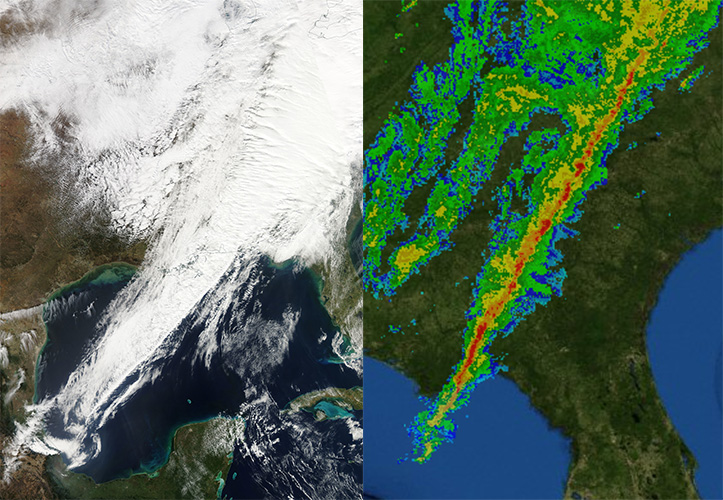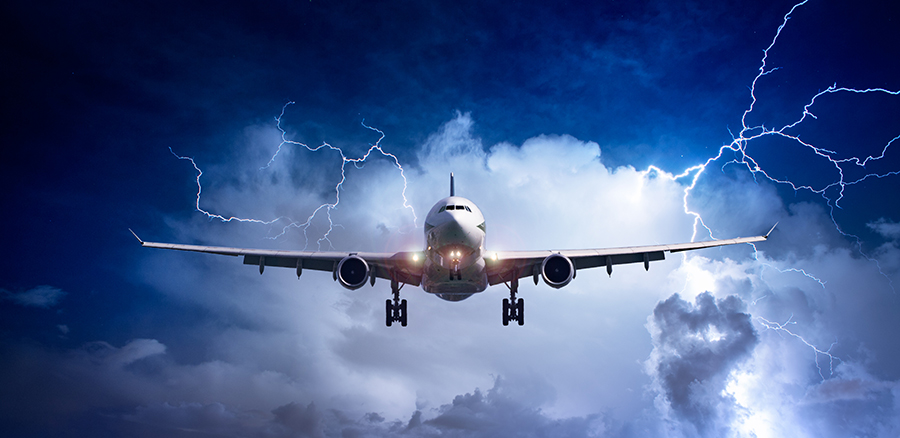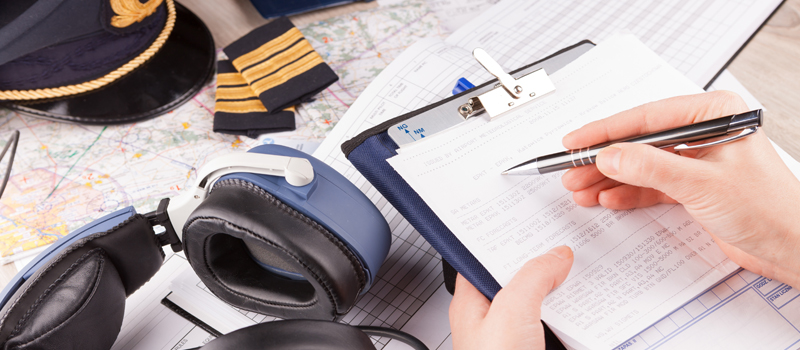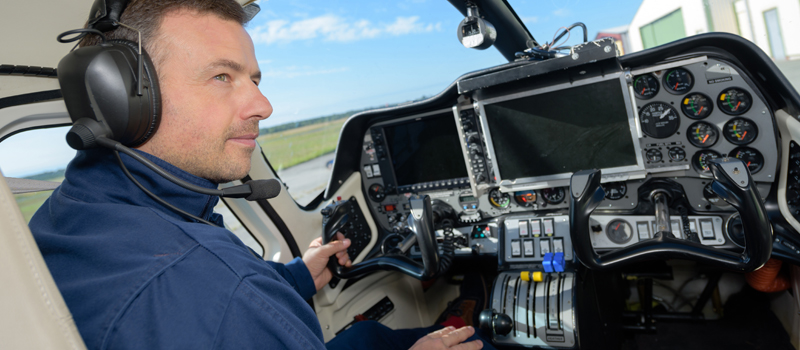When it comes to thunderstorms, many pilots have been caught in a tricky situation due to a fast-moving squall line. Understanding what causes these types of thunderstorms and how they behave is crucial to ensuring you don’t find yourself surrounded by lightning with no way out.
What Is a Squall Line?

A squall line is a group of thunderstorms arranged in the form of a long line, often hundreds of miles long, but only between 10 to 20 miles wide. Squall lines are usually found in the warm sector of a cyclone (in the midlatitudes) and about 60 to 200 miles in front of a cold front.
A squall line moves quickly and often develops into a bow (C) shape before dissipating. A squall line consists of conditions commonly associated with thunderstorms such as heavy precipitation, lightning, high wind speeds, and hail.
How Do Squall Lines Develop?
Squall lines evolve from typical thunderstorms. To understand how these thunderstorms develop into squall lines, you need to know how a normal thunderstorm develops and dissipates and how a squall line prevents these thunderstorms from dissipating.
Thunderstorms experience three primary stages:
- Cumulus (Developing) Stage
- Mature Stage
- Dissipating Stage
Cumulus (Developing) Stage
During this stage, a cumulus cloud is fed air from the base of the cloud moving up. This causes the cumulus cloud to develop into a towering cumulus cloud (a tall cumulus cloud).
Mature Stage
When the cloud reaches the mature stage, rain begins to form and fall from the cloud. This causes the air to cool and a downdraft to form. The cloud continues to feed air from the base (updraft), and the updraft and downdraft do not mix during this stage.
Dissipating Stage
When the downdraft and updraft begin to mix, the cloud’s energy source (the updraft) is no longer available, and the cloud starts to dissipate.
A Multicell Storm
Squall lines develop into multicell storms. This merging of storms causes the cloud to develop into a shelf cloud.
The key to the formation of a squall line is the creation of a gust front. A gust front is formed when downdrafts from the squall line push cold air ahead of the thunderstorms. This air lifts the warmer air in front of the gust front. This air is then fed into the thunderstorms through their updrafts. This causes the downdrafts and updrafts to separate, which causes the storm to continue growing.
Characteristics
Squall lines often develop during spring and summer in the United States and move eastward when developed in the midlatitudes. When squall lines are formed or pass arid regions, dust storms may form due to high winds that lift dust from the desert floor.
Smaller cumulus or stratocumulus, as well as cirrus clouds, can be found ahead of a squall line. Occasionally cirrocumulus or altocumulus clouds may also be present.
A squall line is one of the most difficult medium-sized weather phenomena to simulate. While a squall line is influenced (and often created) by geographic features such as terrain, a squall line is highly variable. Therefore, it is difficult to obtain accurate lateral boundary and initial condition data, which is essential for weather prediction models.
Squall lines are depicted on weather charts as an alternating dash, two-dot, dash pattern and labeled “SQUALL LINE” or “SQLN.”
How to Avoid a Squall Line
Due to a squall line’s long line nature, the usual advice of “fly around the thunderstorm” is often not practical when a squall line is encountered.
However, a squall line does tend to move faster than a normal single-cell thunderstorm. This provides you with a few options.
Land Before the Squall Line Arrives
If you are already airborne and are approaching the squall line, it may be the most practical option to divert and land before the squall line arrives. Once on the ground, you can wait for the fast-moving squall line to pass and then depart once again, hopefully not too far from your original intended track.
Fly North or South
If you are close to one end of the squall line, it may be possible to fly around it. Remember that you will have to keep a significant distance away from the squall line, preferably over 40 nautical miles, when passing around it.
Expect significant changes in pressure, temperature, wind, and other weather conditions as you transition from one side of the squall line to the next.
What to Do If You Fly Into a Squall Line
If you are approaching a squall line, the best course of action is to turn around before you reach it. If you find yourself in a situation where you have entered a squall line, here are some things to keep in mind.
Do not turn around. If you are inside the squall, turning around will induce significant load factors that may overstress the aircraft due to the extreme turbulence you will experience inside the storm. If you need to change direction, use the least amount of bank angle necessary.
Accept any altitude deviations, and focus on maintaining attitude instead. You will likely have no visual reference to the horizon, so you will have to use the artificial horizon (AH).
Inform ATC of your predicament and inform them that you will deviate from your assigned altitude. If you haven’t already, ensure you know where the nearest suitable airport is.
Adjust speed as necessary to maintain maneuvering or turbulence penetration speed depending on what is published in the Pilot Operating Handbook (POH).
Disconnect the autopilot. While most autopilots will automatically disconnect when experiencing turbulence, manually disconnecting the autopilot will ensure that the aircraft is not overstressed by the autopilot system when experiencing extreme turbulence.
Do not extend the flaps as this will reduce the aircraft’s maximum permitted load factor.
Turn on any anti-ice equipment, especially the pitot heat. You will likely experience icing conditions when entering a squall line.
Secure loose objects in the aircraft and fasten your seatbelt. Due to the turbulence, you will experience, you will be thrown around the cockpit if you do not have your seatbelt fastened. The last thing you need is a water bottle hitting you in the face while you’re flying.
Turn the lights in the cockpit up so that they are brighter. The bright light from lightning can cause temporary blindness. Increasing the brightness inside the cockpit will reduce this effect.
Conclusion
It is your duty as a pilot to understand how squall lines are formed and how they behave to avoid catastrophe when flying cross-country. Use all the weather information at your disposal to make an informed decision about which route to fly, and do not hesitate to change course if you see a squall line forming or moving towards you.





